HIPAA compliance—what’s the deal with that? In the tangled web of U.S. healthcare data protection, it’s a biggie. At ScriberJoy, we totally get that wading through these regs (oh, what a joy) is no small feat, and their ripple effects on healthcare organizations? Monumental.
So, here we go—a no-nonsense, down-to-earth guide to HIPAA compliance. Think of it as your compliance requirements checklist. We break it down, piece by piece, essential component by component, with straightforward steps you can actually do something with. Newbie in the HIPAA world? Or perhaps your compliance program’s just dusty? No sweat—this post hands you the knowledge and tools to keep those sensitive patient details locked up tighter than Fort Knox.
What is HIPAA and Why Does It Matter?
The Essence of HIPAA
HIPAA, the Health Insurance Portability and Accountability Act is basically the referee in the game of healthcare data protection. Picture this: it’s a federal law setting the gold standard for keeping your medical secrets on lockdown. Why? Because Congress in 1996 decided that while sharing health info is cool and all-quality healthcare depends on it-nobody wants their private data out in the wild.
Who Must Comply with HIPAA?
And HIPAA’s got a long reach… more than just your local doctor’s office. We’re talking a whole squad of organizations managing that precious PHI-protected health information. Your health plans? Yep. Healthcare providers? Check. Clearinghouses and all those business buddies of the listed crew? Absolutely. Even the tech companies or billing outfits working with these guys have to play by the HIPAA rulebook if they touch PHI.
The Steep Price of Non-Compliance
Skipping on HIPAA? You’re basically playing with fire. The penalties are no joke-ranging from $100 to $50,000 per slip-up, and the grand total can hit a max of $1.5 million per year for each slap on the wrist. In 2018, Anthem Inc. coughed up a hefty $16 million. That’s thanks to HIPAA violations that impacted almost 79 million folks. But wait… there’s more: criminal charges, kissing your medical license goodbye, and a tsunami-sized hit to your reputation.
Key Steps for HIPAA Implementation
So, how do you stay on the right side of HIPAA? It’s a checklist, folks:
- Risk Assessment: Dive deep-what’s going wrong or could go wrong with your PHI handling?
- Policy Development: Put on the thinking cap and draft policies that tackle the problems head-on.
- Employee Training: Get your team in line with regular HIPAA boot camps.
- Technical Safeguards: Build a fortress around your electronic PHI (ePHI).
- Business Associate Agreements: Make sure your contracts with third-party handlers have HIPAA at their core.
Looking ahead, we’ll dig deep into HIPAA compliance, peeling back the layers of the Privacy Rule, Security Rule, and Breach Notification Rule so you get the full picture of what you’re dealing with.
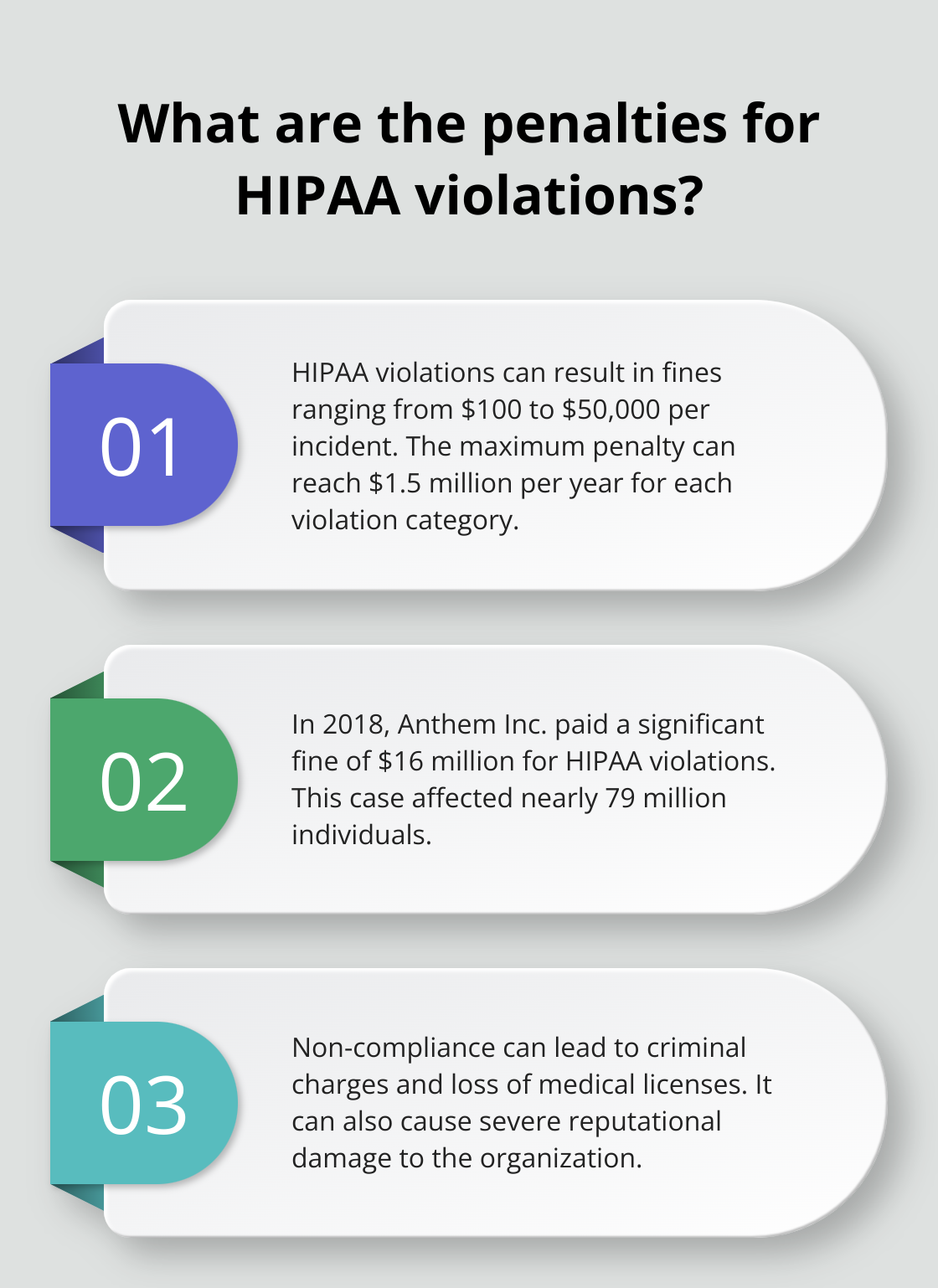
Core Rules of HIPAA: A Comprehensive Guide
HIPAA – it’s like the secret sauce for protecting patient privacy and data security, all wrapped up in four key rules. Let’s chew through them in straight talk.
The Privacy Rule: Protecting Patient Information
The Privacy Rule – it’s the patient data bodyguard. Any health info that could identify you, yeah, it’s got this rule all over it. It’s like a velvet rope that only lets disclosed info through with permission. Healthcare folks? They’ve got a checklist:
- Naming a Privacy Officer – someone’s gotta mind the shop.
- Crafting a Notice of Privacy Practices – a menu of your privacy rights.
- Giving patients a backstage pass to their own health records.
- Drilling the team on privacy protocol – yep, training time.
The Security Rule: Securing Electronic Data
So, the Privacy Rule’s got all PHI, but the Security Rule lasers in on the electronic stuff (ePHI) – a high-tech lock and key. It’s got three big guns:
- Administrative: Playbooks and policies to guard the fort.
- Physical: Locks, keys, and guards for your tech and turf.
- Technical: The digital gatekeepers – tech means to keep prying eyes out.
The Breach Notification Rule: Reporting Data Leaks
Uh-oh, breach territory. If data goes walkabout, the cavalry gets called. Those affected, HHS, maybe even the press. The Breach Notification Rule sounds the alarm:
- Shout out to those affected – within 60 days, pronto.
- For breaches hitting 500+ people, HHS and media need a heads-up.
- For the smaller slip-ups, under 500, keep a diary and report yearly to HHS.
The Enforcement Rule: Ensuring Compliance
And now, the Enforcement Rule – the muscle of HIPAA. It’s all about consequences – investigations, penalties, all that jazz. Check this out:
- Penalties tiered by negligence – clarity meets consequence.
- Max penalties? $1.5 million a pop for each violation type.
- Go too far, and we’re talking criminal charges – yikes.
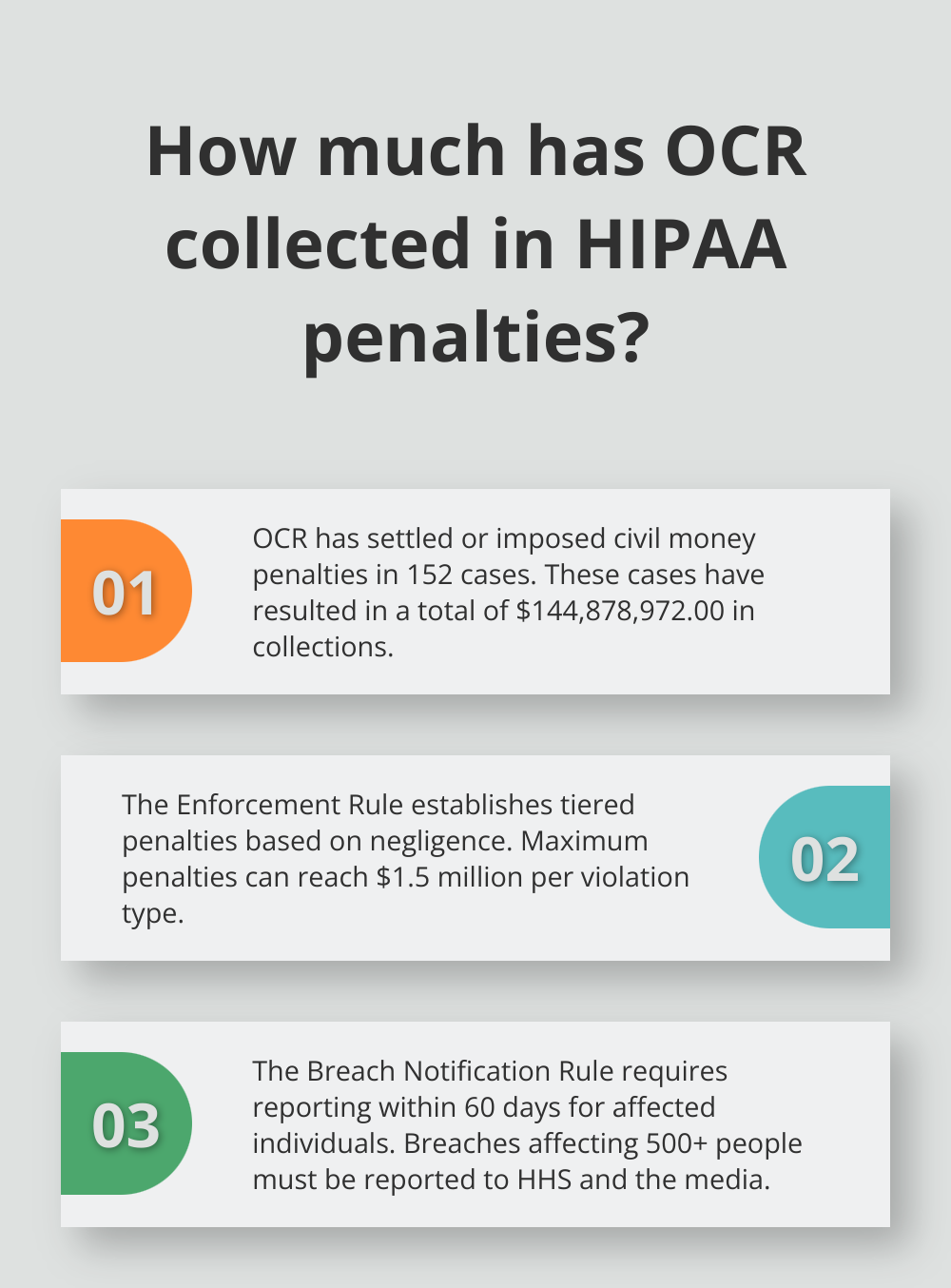
OCR has settled or slapped civil money penalties on 152 occasions, raking in a cool $144,878,972.00.
Getting these rules down pat – it’s about building trust and keeping those privacy fences tight. We’ve nailed the rules, next up, let’s dive into turning this know-how into action in your healthcare gig. Oh, and getting your website HIPAA compliant – that’s a biggie on the checklist.
How to Implement HIPAA Compliance
Conduct a Comprehensive Risk Assessment
Kick-off your HIPAA compliance journey with a no-stone-left-unturned risk assessment. Dive deep into your data handling processes. The SRA Tool is not just any tool – it’s a desktop app taking you on a guided tour through the security maze, using a simple, wizard-based approach. Don’t make the rookie mistake of only eyeing tech aspects; loop in physical security and administrative hoops in this dance.
Develop Strong Policies and Procedures
Once you’ve spotlighted the weak links, get cracking on crafting crystal-clear policies to tackle each concern. Think of these as your HIPAA compliance GPS. From data access to breach protocols, leave no stone unturned. Tailor every page to fit like a glove to your organization’s quirks and needs (bye-bye generic templates). And, oh – keep these policies fresh and updated as your org shapeshifts over time.
Implement Rigorous Staff Training
Your crew is the first line of defense against HIPAA whoopsies. Roll out a top-tier training program covering every nook and cranny of HIPAA compliance. The HHS website gives the lowdown on HIPAA Rules, plus throws in games, tools, and more goodies. Memorize who attends – you’ll thank yourself later when proving those compliance efforts.
Secure Your Technology
In this tech frenzy era, robust technical safeguards? Non-negotiable. From strong access controls to encryption that’s got your back (in transit and at rest), all bases should be covered. Audit logs for tracking data access? Check. Think multi-factor authentication and mobile device management for teams using personal gear. Physical security is not an afterthought – server rooms need locks tighter than Fort Knox.
Establish Business Associate Agreements
Don’t forget those third-party vendors handling PHI for you. Roll out airtight Business Associate Agreements (BAAs) crafted for each specific relationship and service. These binding papers lay down the law on each party’s role in safeguarding PHI.
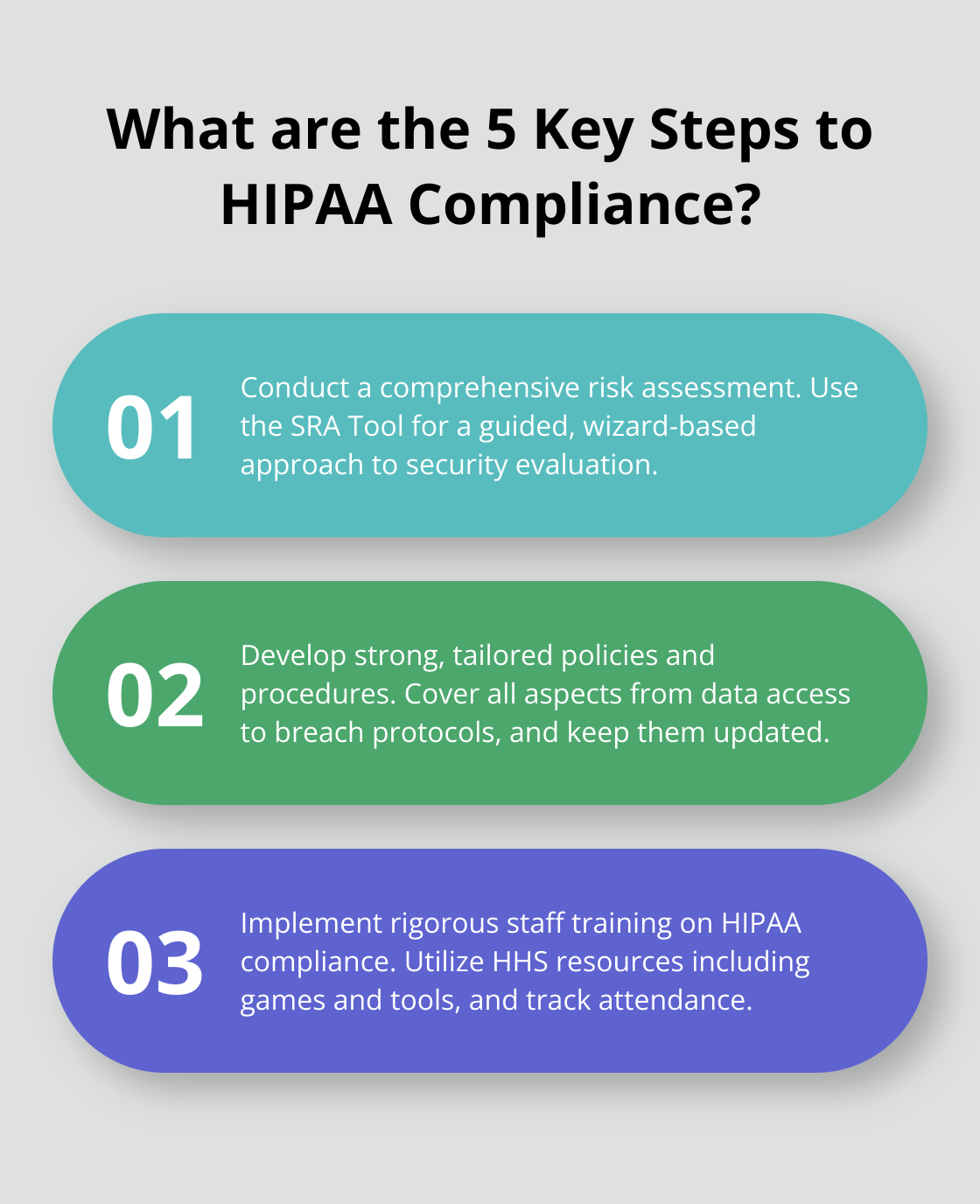
To get a grip on HIPAA compliance from all angles, devour the essential HIPAA compliance documents and their must-know requirements.
Final Thoughts
HIPAA compliance – a never-ending commitment to safeguarding patient data. Think of a comprehensive HIPAA compliance checklist as your trusty roadmap… for navigating risk assessments, forming robust policies, and giving your staff the proper training spin. Regular audits? Policy updates? Yep, they’re your secret sauce to keep pace with the ever-evolving threats and shiny tech changes out there.
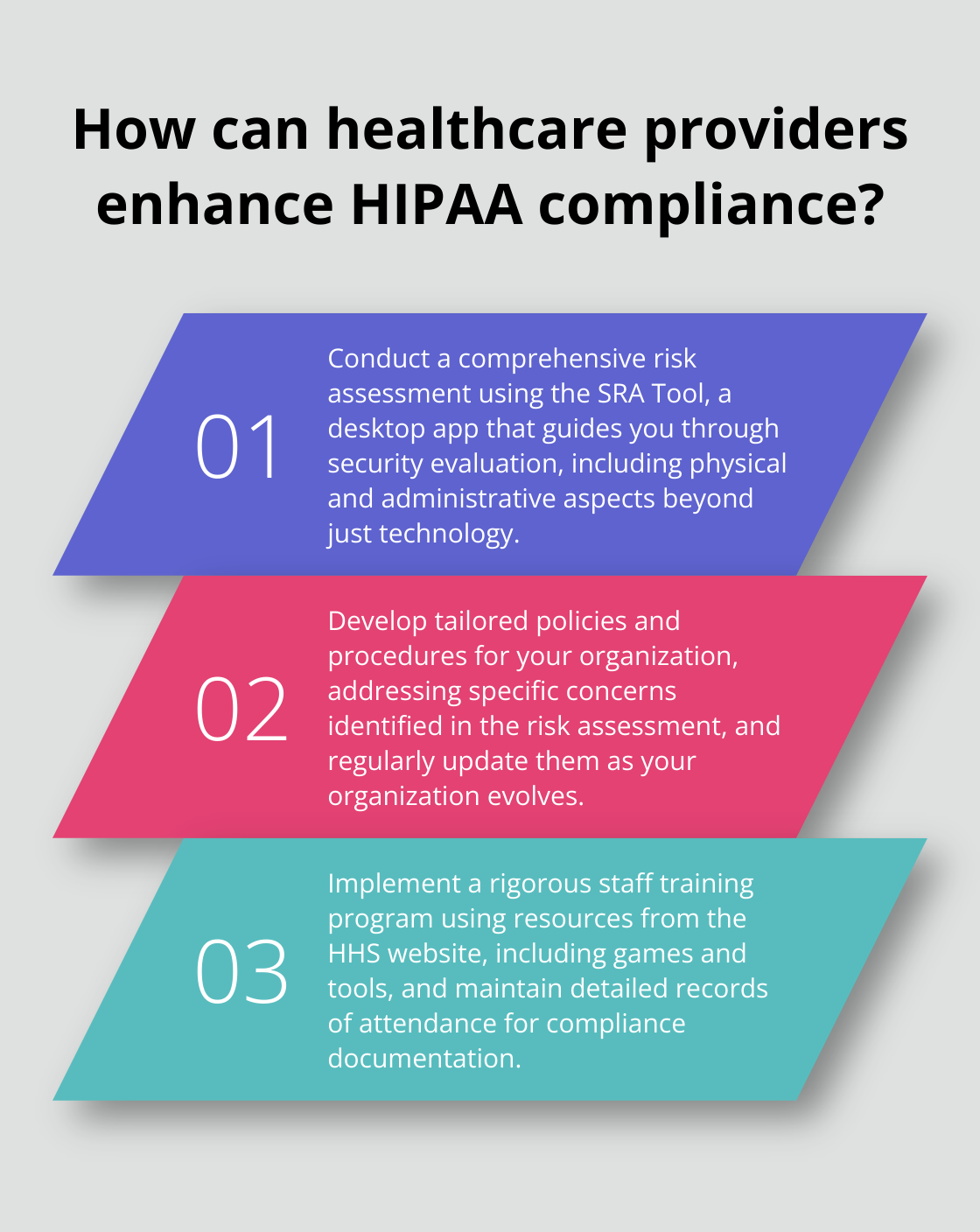
For the curious minds, the U.S. Department of Health and Human Services website is the treasure trove of all things HIPAA. Dive into an ocean of resources, where you’ll find guidance documents and FAQs galore that are all about making healthcare compliance less of a mystery and more of a friend. ScriberJoy gets it – HIPAA compliance in healthcare documentation? Critical.
Our medical transcription software is, to put it simply, like combining AI with human brainpower to churn out spot-on medical documents. Tools like ScriberJoy – totally HIPAA-compliant, by the way – let healthcare pros zero in on what really matters: patient care, not piles of paperwork. Bottom line? HIPAA compliance equals trust. And protecting sensitive patient info… that’s the name of the game.
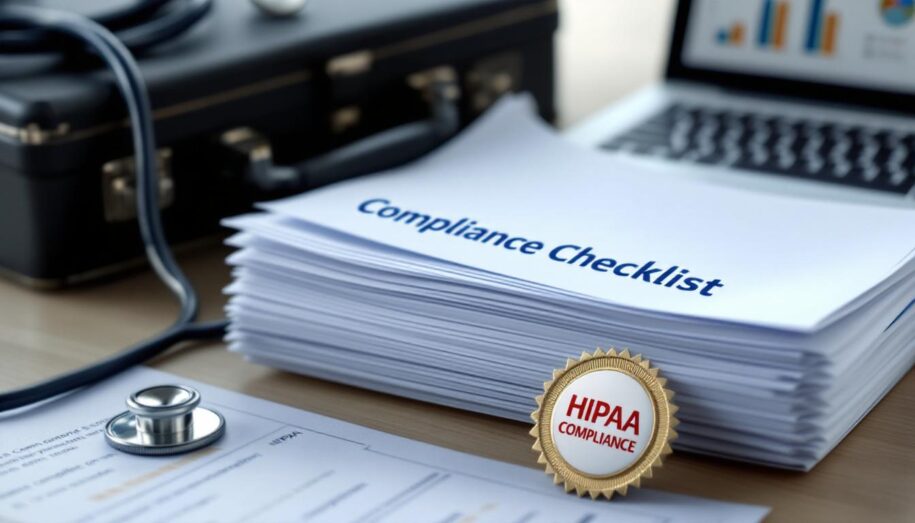
Leave a Reply
You must be logged in to post a comment.